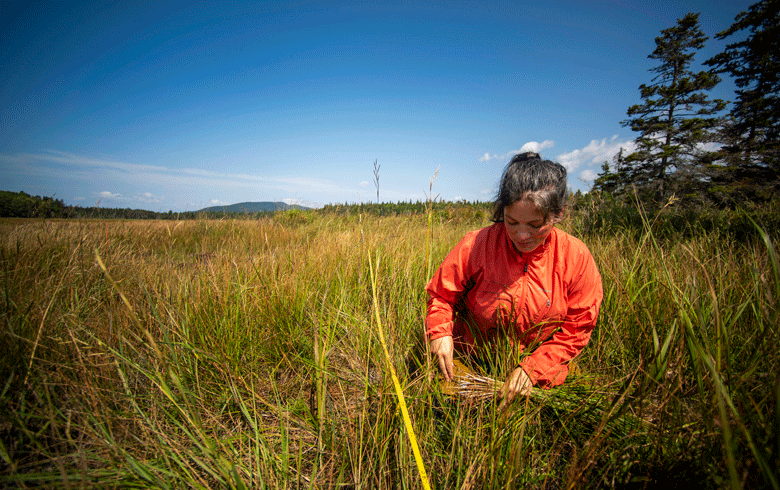Indigenous peoples should be part of land use decisions, asserts Darren Ranco, a University of Maine associate professor of anthropology and citizen of Penobscot Nation.
“We have to be at the table,” he says. “When indigenous people are on the land and making decisions about land management, biodiversity increases.”
An international study led by Erle Ellis, professor and director of the Laboratory for Anthropogenic Landscape Ecology at the University of Maryland, Baltimore County, supports that view.
“Even 12,000 years ago, nearly three-quarters of terrestrial nature was inhabited, used, and shaped by people.”
It found that indigenous peoples have shaped most of the Earth’s ecology for thousands of years and that the main cause of the current biodiversity crisis is not human destruction of uninhabited wildlands, but rather the appropriation, colonization, and use of lands previously sustainably managed.
Ranco and Jacquelyn Gill, a UMaine associate professor of paleoecology and plant ecology, are co-authors of the study titled “People have shaped most of terrestrial nature for at least 12,000 years.” Proceedings of the National Academy of Sciences published the study April 19.
To truly understand land nature today, Ellis says it’s necessary to grasp the deep human history of that nature. And outside of a few remote areas, people and societies have shaped nature as we know it for thousands of years, he says.
“Our global maps show that even 12,000 years ago, nearly three-quarters of terrestrial nature was inhabited, used, and shaped by people,” Ellis says. “Areas untouched by people were almost as rare 12,000 years ago as they are today.”
Even lands that have been characterized as “natural” and “wild” generally have long histories of use, as do protected areas and indigenous lands.
“Efforts to conserve and restore these human-shaped natures won’t be successful without empowering the indigenous, traditional, and local people who know their natures in ways that scientists are only beginning to understand,” says Ellis.
Ranco, Gill, and 15 other scientists joined Ellis to examine the early and sustained global significance of cultural landscapes to better understand and conserve land and the animals and plants that live on it. To do so, researchers utilized the most up-to-date, spatially explicit global reconstruction of historical human populations and land use.
Global supply chains, mechanization, and chemical nutrients and pest control have accelerated the trend toward more intensively used and homogeneous cultural landscapes, the team found.
Gill says the findings show that not all human activity is inherently bad. There’s a spectrum of land use activities and intensities. Hunter-gatherers and early farmers, for instance, created diverse, dynamic, and productive mosaics of lands and novel ecological communities that were sustained for millennia.
The work suggests that people don’t have to be hands-off or not visit places they care about.
“It invites all of us to think about our place in nature,” she says. “To learn how to be a good steward and good ancestor for our children and grandchildren and great-grandchildren.”





